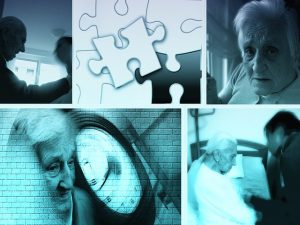We are already inseparable from technology and we use the Internet almost every single day, no matter if we are working, chatting, posting photos on social media, or betting online using Bet Regal Bonus. However, technology can be used for many different things, and some of its uses can change how we detect Alzheimer’s.
Unfortunately, there is no cure for Alzheimer’s disease. Through the decades of research and scientistic efforts, medicine has only been able to produce valuable drugs that can help in slowing down the progression of the disease. Still, different patients respond differently to a treatment, which provides insufficient results.
When it comes to new methods, one thing sounds more than promising — the introducing of Artificial Intelligence to the treatment. So far, AI has shown enormous potential in diagnosing Alzheimer’s dementia.

Radiologist Jae Ho Sohn and his team of scientists recently conducted a new study at the UC, San Francisco. Sohn used a standard brain scanner and a specially developed machine-learning algorithm to identify Alzheimer’s. The research showed that it is possible to detect the disease six years before any clinical analysis.
It is the first example of diagnosing this disorder in such an early phase, which gives doctors great opportunities for successful treatment. Until then, Alzheimer’s was hard to diagnose during the early stages of the disease because the symptoms can be similar to those of other health conditions. By the time clinical trials detect it, it is usually too late. Alzheimer’s destroys too many neurons that cannot be restored.
When diagnosing Alzheimer’s, radiologists scan glucose levels in the brain that can indicate the extinction of neurons in the early stage of the disease since brain cells feed on these molecules. Active cells imply a higher concentration while, with disease progression and eventually the extinction of brain cells, the glucose molecules disappear entirely.
PET scanners can measure glucose levels in the brain. A special PET scanner can even detect the level of the protein whose concentration is in direct correlation with Alzheimer’s disease. However, Alzheimer’s progress is slow and plodding, and sometimes can last for years, so changes in glucose levels are small, almost unnoticeable.
Deep learning plays a vital role here, with its algorithms capable of recognizing even the smallest changes in the early stages of this disorder.
In order to teach AI to detect the disease, it was necessary to insert an extensive database of adequate pieces of information. Researchers used public data from the Alzheimer’s Disease Neuroimaging Initiative (ADNI).
The algorithm was fed with a total of 1.921 PET scans. Some were showing the presence of Alzheimer’s, some indicated minor brain disorders, while some scans were clear from any cognitive changes.

In the test phase, scientists presented the algorithm with two separate datasets. In the first segment, artificial intelligence was shown 188 images from the same ADNI base that was used in training, with the difference that the machine encountered those scans for the first time. In the second segment, 40 new scans were introduced to the algorithm.
Machine learning succeeded to make the right diagnosis in 98% of cases. Moreover, the AI algorithm detected Alzheimer’s disease on scans that were more than six years older than the official diagnose.
Sohn believes that cognitive systems can bring the solution to the problem with diagnosing Alzheimer’s, and they need to be tested by using the significantly larger databases and by spanning to different continents, hospitals, and patients.
If tests show positive results, it will be possible to make an early discovery of Alzheimer’s and provide adequate treatment that will be more successful than the present one.
Copyright 2025 | Theme By WPHobby. Proudly powered by WordPress